- Raspberry Cultivation Tricks
- Overview
- Method 1: Mulching
- Method 2: Drip Irrigation
- Conclusion
- Method 1: Using Mulch to Retain Moisture
- Method 2: Drip Irrigation for Effective Watering
- Tips for Choosing the Right Mulch
- 1. Organic Mulch
- 2. Water Retention
- 3. Weed Control
- 4. Temperature Regulation
- 5. Availability and Cost
- 6. Proper Mulching Technique
- Benefits of Mulching for Raspberry Bushes
- 1. Moisture Retention
- 2. Weed Suppression
- 3. Soil Temperature Regulation
- 4. Soil Health Improvement
- How to Install Drip Irrigation System for Raspberries
- 1. Gather the necessary materials
- 2. Plan the layout
- 3. Dig a trench
- 4. Lay the drip tubing
- 5. Install emitters
- 6. Install the pressure regulator and filter
- 7. Install a timer
- 8. Secure the tubing
- 9. Test the system
- 10. Adjust as needed
- Preventing Soil Erosion with Mulching
- Signs of Overwatering and Underwatering Raspberry Plants
- Signs of Overwatering
- Signs of Underwatering
- Additional Care and Maintenance for Healthy Raspberry Bushes
- 1. Pruning
- 2. Fertilization
- 3. Pest and Disease Control
- 4. Watering
- 5. Support and Training
- Question-answer:
- How can I retain moisture in the soil for my raspberry bushes?
- What are the benefits of mulching for raspberry bushes?
- How often should I water my raspberry bushes?
- Are there any other methods to retain moisture in the soil for raspberry bushes?
- Can I use any type of mulch for my raspberry bushes?
- Should I water my raspberry bushes during the winter?
- Video: Pruning Raspberries – Why? How? When? (2020)
Growing raspberry bushes can be a rewarding experience, but it requires careful attention to the plants’ needs, especially when it comes to moisture levels in the soil. Raspberry bushes thrive in moist soil conditions, as they require a consistent supply of water to produce delicious, juicy berries. However, maintaining optimum moisture levels can be a challenge, particularly in hot and dry climates.
Fortunately, there are two effective methods that can help retain moisture in the soil and promote healthy raspberry bushes. One method involves the use of organic mulch, while the other method involves the installation of a drip irrigation system.
Organic mulch, such as straw or wood chips, can be spread around the base of raspberry bushes to help retain moisture in the soil. Mulch acts as a barrier, preventing water from evaporating too quickly and keeping the soil consistently moist. In addition to retaining moisture, mulch also helps suppress weed growth, which can compete with raspberry bushes for water and nutrients. By applying a layer of mulch around the base of the plants, you can ensure that the roots stay hydrated and promote healthy growth.
An alternative method to retain moisture in the soil is through the installation of a drip irrigation system. This system delivers water directly to the roots of the raspberry bushes, minimizing water loss through evaporation and ensuring that the plants receive a consistent supply of moisture. Drip irrigation systems can be set to release water at timed intervals or controlled manually, allowing you to adjust the watering schedule according to the plants’ needs and weather conditions. By providing water directly to the roots, this method can significantly reduce water waste and promote the healthy growth of raspberry bushes.
In conclusion, maintaining optimum moisture levels is crucial for the successful cultivation of raspberry bushes. Whether through the use of organic mulch or a drip irrigation system, these methods can help retain moisture in the soil and ensure healthy bushes that produce an abundance of delicious raspberries.
Raspberry Cultivation Tricks
Overview
Raspberries are popular backyard fruit bushes known for their delicious berries and ease of cultivation. However, to ensure healthy raspberry bushes and maximize their fruit production, it is important to pay attention to the soil moisture levels. In this article, we will discuss two effective methods to retain moisture in the soil for healthier raspberry bushes.
Method 1: Mulching
Mulching is a common practice in raspberry cultivation as it helps retain moisture in the soil by reducing evaporation. Here’s how to use mulch effectively:
- Choose the right mulch: Use organic materials like straw, wood chips, or compost as mulch. Avoid using grass clippings or leaves that may contain weed seeds.
- Apply mulch around the base: Spread a layer of mulch around the raspberry bush, starting from the base and extending to the outer drip line.
- Avoid mulch contact with the stems: Make sure the mulch does not touch the stems of the raspberry bush, as it may lead to rot or disease.
- Maintain the mulch layer: Check the mulch layer regularly and add more if necessary. A layer of 2-3 inches is ideal for retaining moisture.
Method 2: Drip Irrigation
Drip irrigation is another effective method to retain moisture in the soil for raspberry bushes. It provides a slow, steady supply of water directly to the roots, reducing water loss through evaporation.
- Install a drip irrigation system: Set up a drip irrigation system with emitters placed near the base of each raspberry bush.
- Control water flow: Adjust the water flow according to the moisture needs of the raspberries. Avoid overwatering, as it can lead to root rot.
- Use a timer: Install a timer to regulate the irrigation schedule. This ensures consistent watering without the need for manual monitoring.
- Maintain the system: Regularly check for clogs or leaks in the drip irrigation system, and repair or replace any damaged components as needed.
Conclusion
Retaining moisture in the soil is crucial for the health and productivity of raspberry bushes. By using mulching and drip irrigation techniques, you can create an optimal environment for your raspberries to thrive. Remember to monitor the moisture levels and adjust your watering practices as needed to ensure the best growing conditions for your raspberry bushes.
Method 1: Using Mulch to Retain Moisture
One effective method to retain moisture in the soil for healthy raspberry bushes is to use mulch. Mulch is a layer of organic material that is spread over the soil surface around the base of the plants.
Step 1: Choose the Right Mulch
When selecting mulch for your raspberry bushes, it is important to choose a type that retains moisture well. Some excellent options include straw, wood chips, pine needles, or compost. These materials will help to minimize evaporation and keep the soil moist for longer periods.
Step 2: Apply Mulch
Once you have chosen the right mulch, evenly spread a layer of it around the base of your raspberry bushes. Aim for a thickness of about 2-3 inches. Be careful not to pile the mulch directly against the stems, as this can lead to rotting or other issues.
Step 3: Maintain Mulch
After applying the mulch, periodically check its condition. If it becomes compacted or starts to break down, add a fresh layer to maintain its effectiveness. Mulch can help regulate the temperature of the soil, suppress weeds, and prevent soil erosion, in addition to retaining moisture.
Step 4: Watering
Using mulch to retain moisture does not mean you can neglect watering your raspberry bushes. However, it does reduce the frequency of watering needed, as the mulch helps to conserve moisture in the soil. Monitor the moisture levels regularly and water as necessary to ensure the soil remains adequately moist.
Step 5: Regular Maintenance
While using mulch is a great method to retain moisture, regular maintenance of your raspberry bushes is still essential. Prune and remove any dead or diseased canes, as this will allow the healthy canes to thrive. Additionally, regularly fertilize your plants to provide them with the nutrients they need for optimal growth.
- Choose a type of mulch that retains moisture effectively.
- Spread a layer of mulch around the base of the raspberry bushes.
- Maintain the mulch by periodically checking its condition and adding a fresh layer if necessary.
- Water the plants regularly, monitoring the moisture levels in the soil.
- Regularly prune and fertilize the raspberry bushes for healthy growth.
Method 2: Drip Irrigation for Effective Watering
Drip irrigation is another effective method to retain moisture in the soil and ensure optimal watering for raspberry bushes. This method involves delivering water directly to the roots of the plants through a network of hoses or tubes with small holes or emitters.
Here are the steps to set up drip irrigation for your raspberry bushes:
- Choose the right system: There are various drip irrigation systems available, including soaker hoses, drip tapes, and micro-sprinklers. Select a system that best suits your needs and the size of your raspberry patch. Drip tapes are ideal for row plantings, while micro-sprinklers work well for individual bushes.
- Design the layout: Plan the layout of your drip irrigation system based on the spacing of your raspberry bushes. Ensure that each plant receives adequate water by positioning the emitters or holes near the plants’ roots.
- Connect the system: Connect the main water supply line to the drip irrigation system. Use a pressure regulator to control the water pressure and prevent damage to the system. Set up a timer to ensure consistent watering and avoid overwatering.
- Install the hoses or tubes: Lay out the hoses or tubes across your raspberry patch, ensuring that they reach all the plants. Secure them in place with stakes or clips to prevent movement or damage.
- Add emitters or holes: Depending on the type of system you’re using, insert emitters into the hoses or create small holes using a punch tool. Position them near the roots of the raspberry bushes.
- Monitor and adjust: Regularly check the system to ensure the water is flowing properly and reaching all the plants. Adjust the flow rate if necessary. Also, monitor the moisture level in the soil to determine if you need to make any changes to the watering schedule.
Drip irrigation is a highly efficient watering method that reduces water waste and prevents overwatering. By delivering water directly to the roots, you can ensure that your raspberry bushes receive the right amount of moisture for healthy growth.
Tips for Choosing the Right Mulch
When it comes to selecting the right mulch for your raspberry bushes, there are a few factors to consider. The right mulch can help retain moisture in the soil, regulate temperature, suppress weeds, and improve the overall health of your plants. Here are some tips to help you choose the right mulch for your raspberries:
1. Organic Mulch
Opt for organic mulch materials, such as straw, wood chips, or shredded leaves. These types of mulch break down over time, adding valuable organic matter to the soil. They also help improve soil structure and fertility.
2. Water Retention
Choose a mulch that has good water retention properties. This is particularly important for raspberries, as they require consistent moisture to thrive. Mulches that hold moisture well include straw, wood chips, and compost.
3. Weed Control
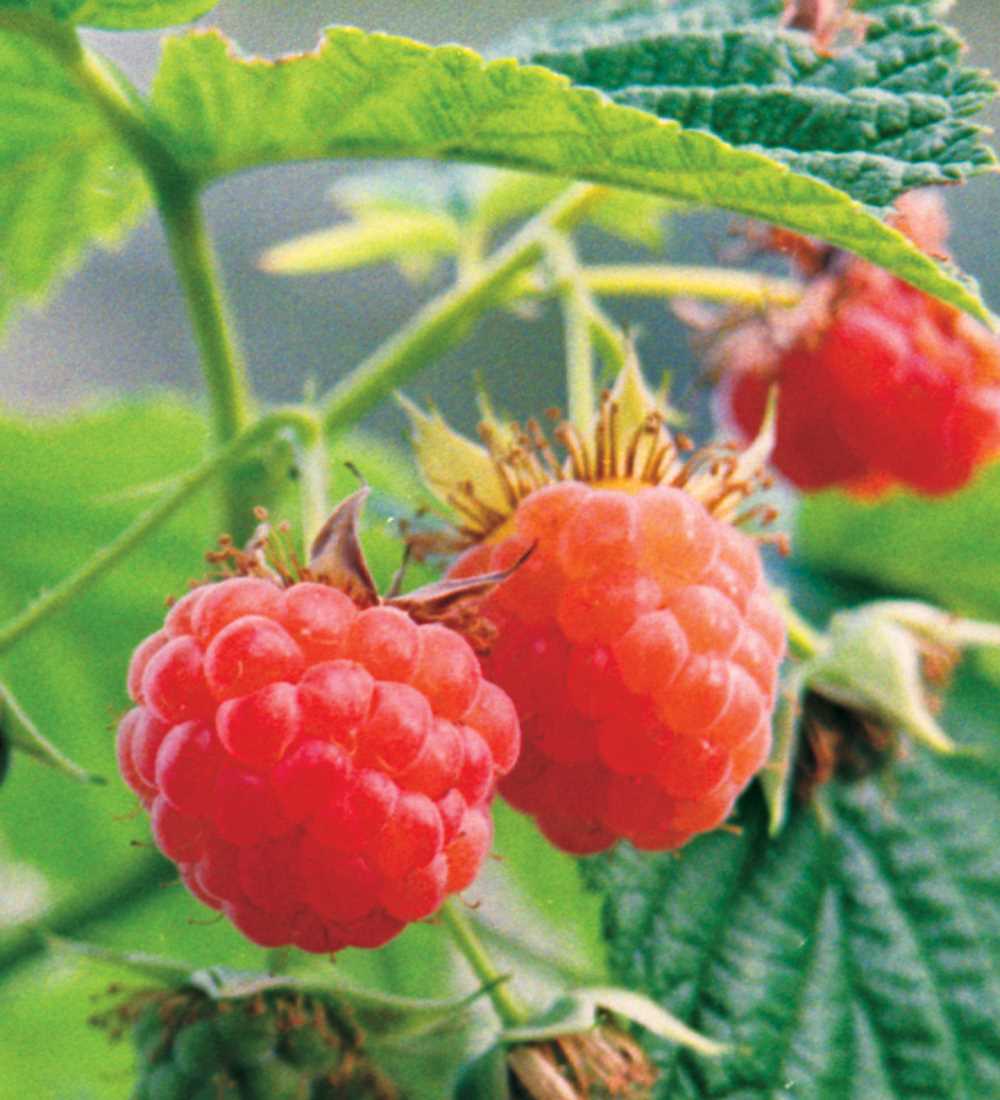
Select a mulch that can effectively suppress weeds. A thick layer of mulch can help prevent weed growth by blocking sunlight and preventing weed seeds from germinating. Mulches such as wood chips or shredded leaves are good options for weed control.
4. Temperature Regulation
Consider the climate and temperature in your region when choosing mulch. Some mulch materials, like straw, can help regulate soil temperature by keeping it cooler in the summer and warmer in the winter. This can benefit the root system of raspberry bushes.
5. Availability and Cost
Take into account the availability and cost of the mulch materials. Some mulches, like straw and wood chips, may be readily available and affordable in your area. Consider the quantity needed and the cost-effectiveness of the mulch options.
6. Proper Mulching Technique
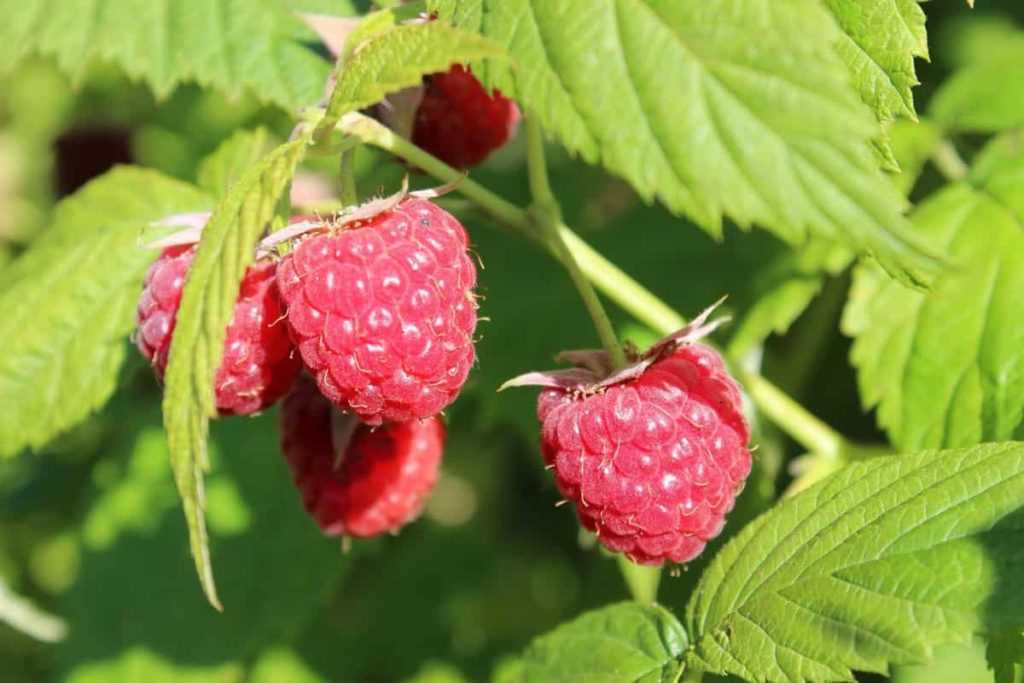
Remember to apply mulch properly around your raspberry bushes. Start by removing any existing weeds or grass from the soil. Then, spread a layer of mulch around the base of the plants, making sure not to cover the stems or crowns. Aim for a depth of 2-3 inches for optimal results.
By following these tips and choosing the right mulch for your raspberry bushes, you can create an optimal environment for their growth and ensure a healthy crop.
Benefits of Mulching for Raspberry Bushes
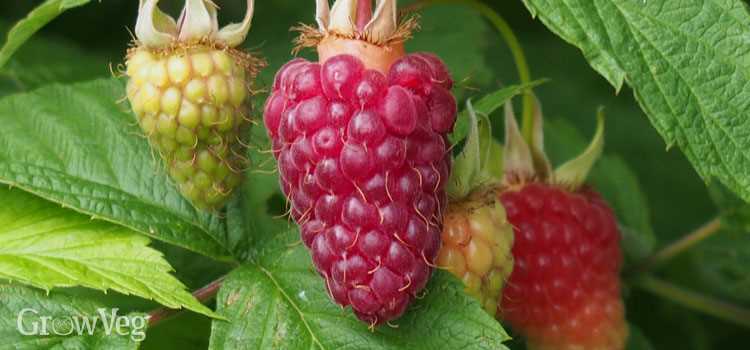
Mulching is an essential practice in raspberry cultivation as it offers numerous benefits for the health and productivity of the bushes. By adding a layer of organic or inorganic material on the soil surface around the base of the plants, mulching helps retain moisture, suppress weeds, regulate soil temperature, and improve overall soil health.
1. Moisture Retention
One of the main advantages of mulching is its ability to retain moisture in the soil. Raspberry bushes require a consistent and adequate water supply to thrive, and mulching helps prevent water evaporation from the soil surface. This can reduce the frequency of irrigation needed and ensure that the roots have access to a steady supply of moisture.
2. Weed Suppression
Mulching serves as a natural weed barrier by blocking sunlight and preventing weed seeds from germinating. This helps control weed growth around the raspberry bushes, reducing competition for nutrients, water, and sunlight. Additionally, mulch helps smother existing weeds, making it easier to manage weed control without the need for excessive manual labor or herbicides.
3. Soil Temperature Regulation
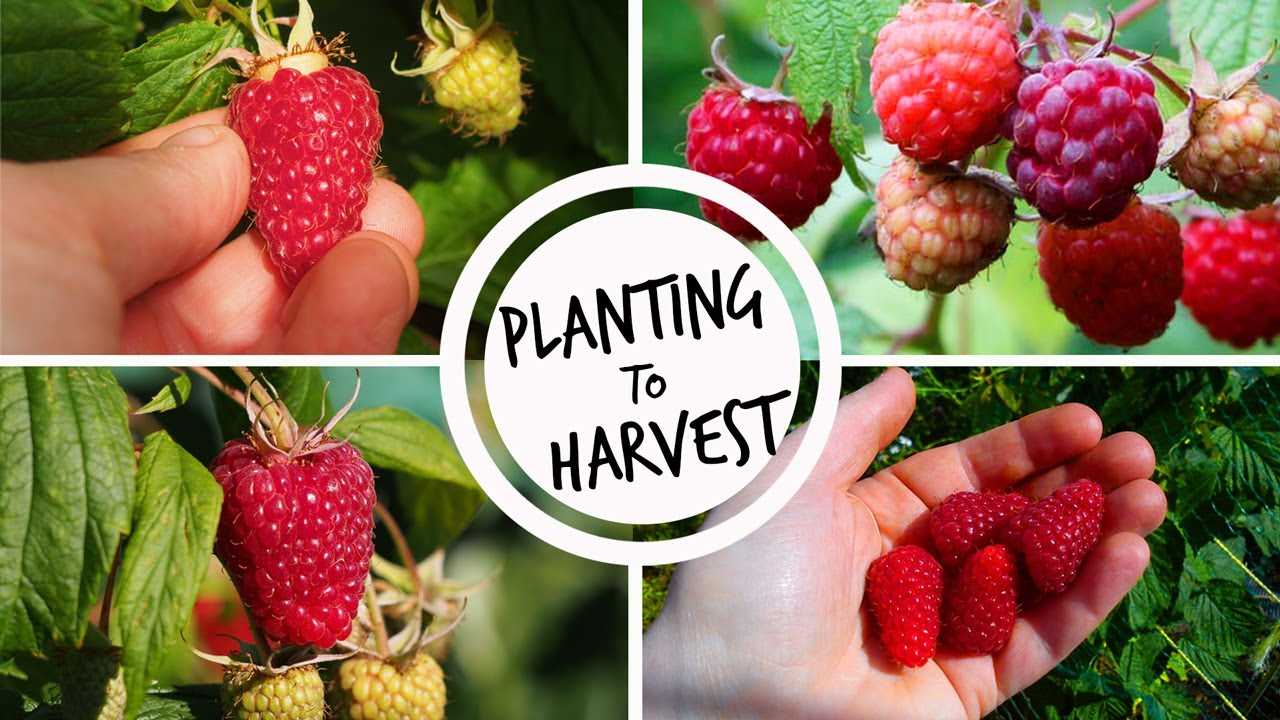
The layer of mulch acts as insulation for the soil, helping to regulate its temperature. In cooler climates, mulching can retain heat and protect the roots from freezing temperatures. In warmer regions, mulching can keep the soil cool, preventing overheating and reducing stress on the raspberry bushes. Maintaining an optimal soil temperature is crucial for the healthy growth of raspberry plants.
4. Soil Health Improvement
Mulch gradually breaks down over time, releasing organic matter into the soil. This organic matter enriches the soil, improving its fertility, structure, and drainage. As the mulch decomposes, it also attracts beneficial organisms such as earthworms, which further enhance soil health. The improved soil health promotes the overall vigor and productivity of the raspberry bushes.
In conclusion, mulching provides numerous benefits for raspberry bushes. It helps retain moisture, suppress weeds, regulate soil temperature, and improve soil health, ultimately leading to healthier and more productive raspberry plants. Implementing a proper mulching practice is essential for successful raspberry cultivation.
How to Install Drip Irrigation System for Raspberries
Installing a drip irrigation system for your raspberry bushes can help ensure optimal soil moisture levels, leading to healthier and more productive plants. Here are the steps to install a drip irrigation system for raspberries:
1. Gather the necessary materials
- Drip tubing
- Emitter tubes
- Connectors
- Pressure regulator
- Filter
- Timer
- Stakes or anchors
- Shovel or trencher
2. Plan the layout
Before beginning the installation, consider the layout of your raspberry bushes and decide where you want to place the drip irrigation system. It’s important to ensure that the drip tubing and emitter tubes reach all the plants in the bed.
3. Dig a trench
Using a shovel or trencher, dig a trench along the row of raspberries where you plan to install the drip irrigation system. The trench should be deep enough to bury the drip tubing.
4. Lay the drip tubing
Unroll the drip tubing along the length of the trench, making sure it reaches all the plants. Cut the tubing to the desired length and use connectors to join sections if needed.
5. Install emitters
Attach emitter tubes to the drip tubing at regular intervals, positioning them near the base of each raspberry plant. The emitters will deliver water directly to the plants’ root zones.
6. Install the pressure regulator and filter
Connect the pressure regulator and filter to the main water supply. These components will help regulate the water pressure and remove any debris that could clog the system.
7. Install a timer
Attach a timer to the system to automate the irrigation process. Set it to water the raspberries for a specific duration and frequency based on their water needs.
8. Secure the tubing
Use stakes or anchors to secure the drip tubing in place. This will prevent it from shifting or getting damaged during regular maintenance or high winds.
9. Test the system
Turn on the water supply and test the system to ensure everything is functioning correctly. Check for any leaks or issues with water distribution.
10. Adjust as needed
Monitor the moisture levels in the soil around the raspberry bushes and make any necessary adjustments to the drip irrigation system. This may include modifying the watering schedule or adding additional emitters.
By installing a drip irrigation system for your raspberries, you can provide consistent moisture to the plants’ root zones while minimizing water waste. This promotes healthy growth and improves fruit production.
Preventing Soil Erosion with Mulching
Soil erosion can be a common problem in raspberry cultivation, as it can lead to nutrient depletion and damage to the root system of the bushes. However, one effective method to prevent soil erosion is through the use of mulching.
Mulching involves covering the soil around the raspberry bushes with a layer of organic material, such as straw, wood chips, or shredded leaves. This layer helps to retain moisture in the soil and prevents rainwater from washing away the top layer of soil. Additionally, mulch provides insulation, keeping the soil temperature more stable and protecting the roots from extreme heat or cold.
To apply mulch, start by clearing any weeds or debris from the area around the raspberry bushes. Then, spread a layer of organic material about 2-4 inches thick around the base of the plants, extending out to the drip line. Be careful not to place the mulch too close to the base of the bushes, as it can create an environment for pests or diseases to thrive.
Mulching has several benefits for raspberry bushes. It helps to reduce weed growth by blocking sunlight, which competes with the raspberry plants for nutrients and moisture. The layer of mulch also acts as a barrier, preventing soil from splashing onto the foliage during heavy rain, which can lead to disease and fungal infections. Additionally, mulch helps to improve soil structure over time as it decomposes, adding organic matter and nutrients to the soil.
When choosing the type of mulch to use, consider the local climate and availability. Organic materials like straw or wood chips are commonly used for raspberry cultivation and are readily available. They also break down slowly, providing long-term benefits to the soil. It is important to replenish the mulch layer periodically, especially after heavy rainfall or as it decomposes over time.
In conclusion, mulching is an effective method to prevent soil erosion in raspberry cultivation. It helps to retain moisture in the soil, reduce weed growth, protect the plant’s root system, and improve soil structure. Utilizing mulching techniques can lead to healthier raspberry bushes and higher yields.
Signs of Overwatering and Underwatering Raspberry Plants
Proper watering is essential for maintaining healthy raspberry plants. Both overwatering and underwatering can have negative effects on the growth and productivity of your raspberry bushes. It is important to understand the signs of overwatering and underwatering so that you can adjust your watering practices accordingly.
Signs of Overwatering
- Yellowing leaves: Overwatered raspberry plants may exhibit yellowing leaves, particularly at the bottom of the plant. The leaves may also appear wilted and droopy.
- Root rot: Too much water can lead to root rot, which is characterized by a foul smell and black or brown, mushy roots. The plant may also show signs of stunted growth.
- Mold or fungus growth: Excessive moisture can create a favorable environment for mold or fungus to grow. Look for signs of mold or fungus on the leaves and stems of your raspberry plants.
- Poor fruit quality: Overwatering can affect the quality of your raspberry fruits. They may become soft, mushy, or easily susceptible to disease.
- Slow growth: If your raspberry plants are not growing as quickly as expected, overwatering could be the culprit. Excess water can limit the availability of oxygen to the roots, stunting their growth.
Signs of Underwatering
- Wilting leaves: Underwatered raspberry plants may exhibit wilting leaves, particularly during hot periods of the day. The leaves may appear dry and crispy.
- Leaf yellowing and dropping: Insufficient water can cause the leaves to turn yellow and eventually drop from the plant.
- Drooping stems: The stems of underwatered raspberry plants may also become brittle and droop downwards.
- Fruit shriveling: Lack of water can cause raspberries to shrivel and dry out before they have a chance to fully ripen.
- Poor fruit production: Underwatering can lead to poor fruit production, with fewer and smaller raspberries.
By closely monitoring the watering needs of your raspberry plants and adjusting accordingly, you can ensure their optimal health and productivity. It is important to strike a balance between providing enough water for their needs and avoiding waterlogged or parched conditions.
Additional Care and Maintenance for Healthy Raspberry Bushes
1. Pruning
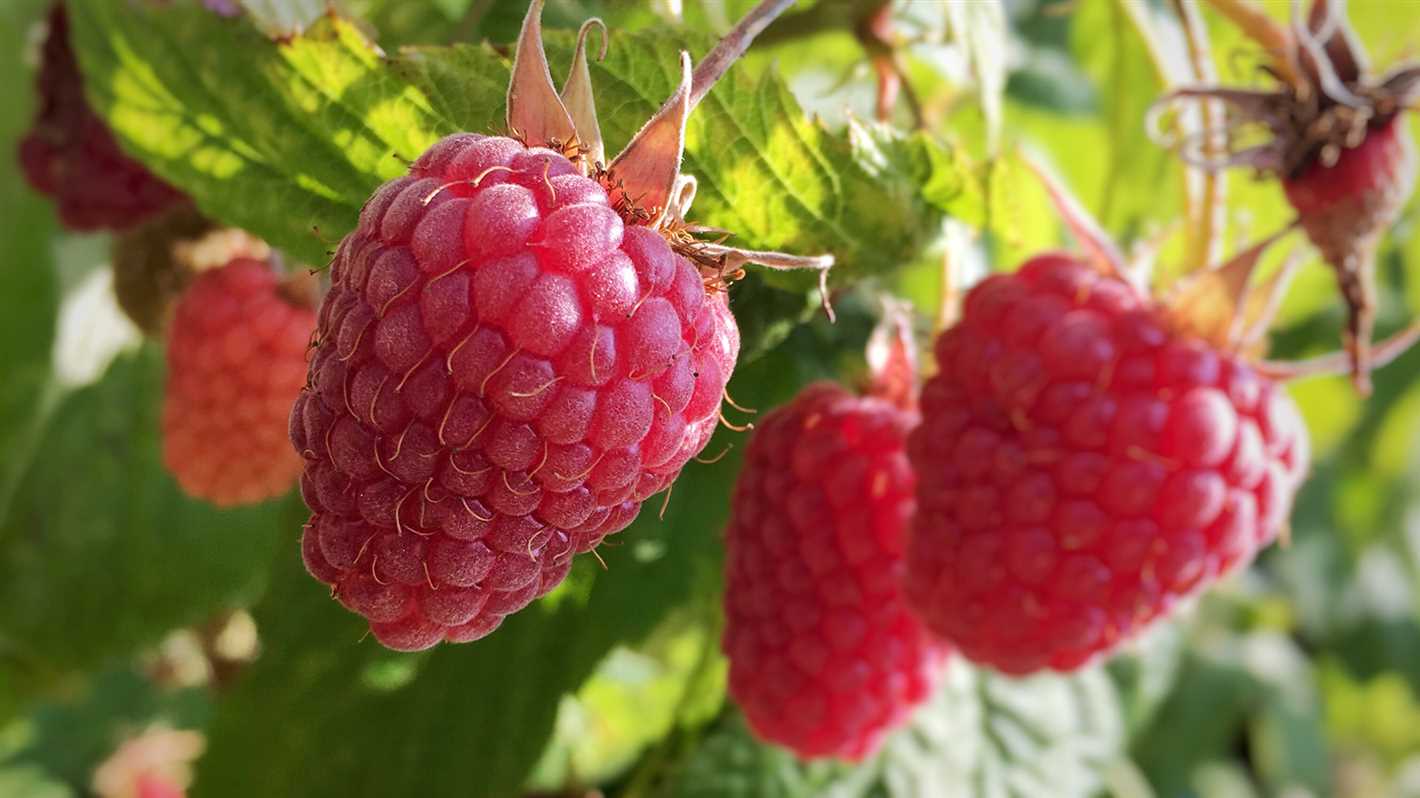
Regular pruning is essential for maintaining healthy raspberry bushes. Pruning helps to remove dead or diseased canes, improve air circulation, prevent overcrowding, and promote the growth of new fruit-bearing canes.
Here are some tips for proper pruning:
- Prune raspberry bushes in late winter or early spring before new growth begins.
- Remove any dead, damaged, or diseased canes by cutting them at ground level.
- Thin out overcrowded canes by cutting them back to ground level, leaving only the most vigorous ones.
- Prune the remaining canes to a height of about 5-6 feet for easier harvesting.
2. Fertilization
Proper fertilization is important for providing essential nutrients to raspberry bushes and promoting healthy growth and fruit production. Here are some tips for fertilizing raspberry bushes:
- Apply a balanced fertilizer, such as a 10-10-10 or 14-14-14 formula, in early spring before new growth begins.
- Spread the fertilizer evenly around the base of the raspberry bushes, avoiding direct contact with the stems.
- Water the bushes thoroughly after fertilizing to help activate the nutrients.
- Repeat the fertilization process once or twice during the growing season, following the package instructions for the specific fertilizer used.
3. Pest and Disease Control
Pest and disease control is crucial for maintaining healthy raspberry bushes and preventing damage to the fruit crop. Here are some tips to protect your raspberry bushes:
- Monitor the bushes regularly for signs of pests such as aphids, spider mites, or raspberry fruitworms. If detected, take appropriate measures to control the infestation, such as using insecticidal soap or applying organic pest control methods.
- Prevent the spread of diseases such as anthracnose or raspberry mosaic virus by practicing good sanitation, removing infected plant material, and keeping the surrounding area clean.
- Consider using disease-resistant raspberry varieties to minimize the risk of infections.
4. Watering

Proper watering is essential for maintaining healthy raspberry bushes, especially during hot and dry periods. Here are some watering tips:
- Water the raspberry bushes deeply and infrequently, providing about 1-2 inches of water per week.
- Apply the water directly to the soil around the base of the bushes, avoiding wetting the foliage to minimize the risk of fungal diseases.
- Mulch the soil around the raspberry bushes to retain moisture and prevent weed growth.
5. Support and Training
Providing support and training for raspberry bushes is important for maintaining an organized and productive planting. Here are some tips:
- Install a trellis or support system to keep the raspberry canes upright and prevent them from sprawling on the ground.
- Tie the canes to the trellis or support system using soft twine or plant ties, gently securing them at regular intervals.
- Prune any lateral shoots or suckers that emerge from the base of the raspberry bushes to maintain a clean and organized planting.
Question-answer:
How can I retain moisture in the soil for my raspberry bushes?
There are two effective methods to retain moisture in the soil for raspberry bushes. The first method is mulching. Apply a layer of organic mulch around the base of the bushes to help retain moisture and prevent evaporation. The mulch will also help control weeds and regulate soil temperature. The second method is using a drip irrigation system. Install drip irrigation lines near the base of the bushes and ensure they are delivering water directly to the roots. This method helps minimize water loss from evaporation and ensures the roots receive a consistent water supply.
What are the benefits of mulching for raspberry bushes?
Mulching provides several benefits for raspberry bushes. Firstly, it helps retain moisture in the soil by preventing water evaporation. The mulch also acts as an insulating layer, regulating soil temperature and protecting the roots from extreme temperatures. Additionally, mulch helps control weeds, which can compete with the raspberry bushes for water and nutrients. Overall, mulching promotes healthier and more productive raspberry bushes.
How often should I water my raspberry bushes?
The frequency of watering raspberry bushes depends on various factors such as climate, soil type, and stage of growth. In general, raspberry bushes require about 1-1.5 inches of water per week. However, it is important to monitor the moisture level of the soil and adjust watering accordingly. The soil should be moist but not waterlogged. It is better to water deeply and less frequently rather than providing shallow and frequent irrigation. Proper watering is crucial for healthy raspberry bushes.
Are there any other methods to retain moisture in the soil for raspberry bushes?
Yes, there are a few other methods to retain moisture in the soil for raspberry bushes. One method is using a soaker hose or drip irrigation system to provide water directly to the roots. This reduces water loss through evaporation. Another method is incorporating organic matter, such as compost, into the soil. Organic matter improves soil structure and moisture retention. Additionally, using shade cloth or planting windbreaks can help reduce water loss due to evaporation and transpiration.
Can I use any type of mulch for my raspberry bushes?
While there are different types of mulch to choose from, organic mulch is generally recommended for raspberry bushes. Organic mulch, such as wood chips, straw, or compost, breaks down over time, adding nutrients to the soil and improving its structure. In addition, organic mulch helps retain moisture, regulate soil temperature, and control weeds. It is important to spread the mulch around the base of the raspberry bushes, leaving a small gap around the stems to prevent rotting and disease.
Should I water my raspberry bushes during the winter?
In most cases, it is not necessary to water raspberry bushes during the winter. Raspberry bushes are dormant during this time and require less water. However, if there is a prolonged dry spell or your region experiences little to no rainfall, it may be beneficial to provide some water to the raspberry bushes. Monitor the moisture level of the soil and only water if it becomes excessively dry. This will help ensure the health and survival of the raspberry bushes during the winter.







